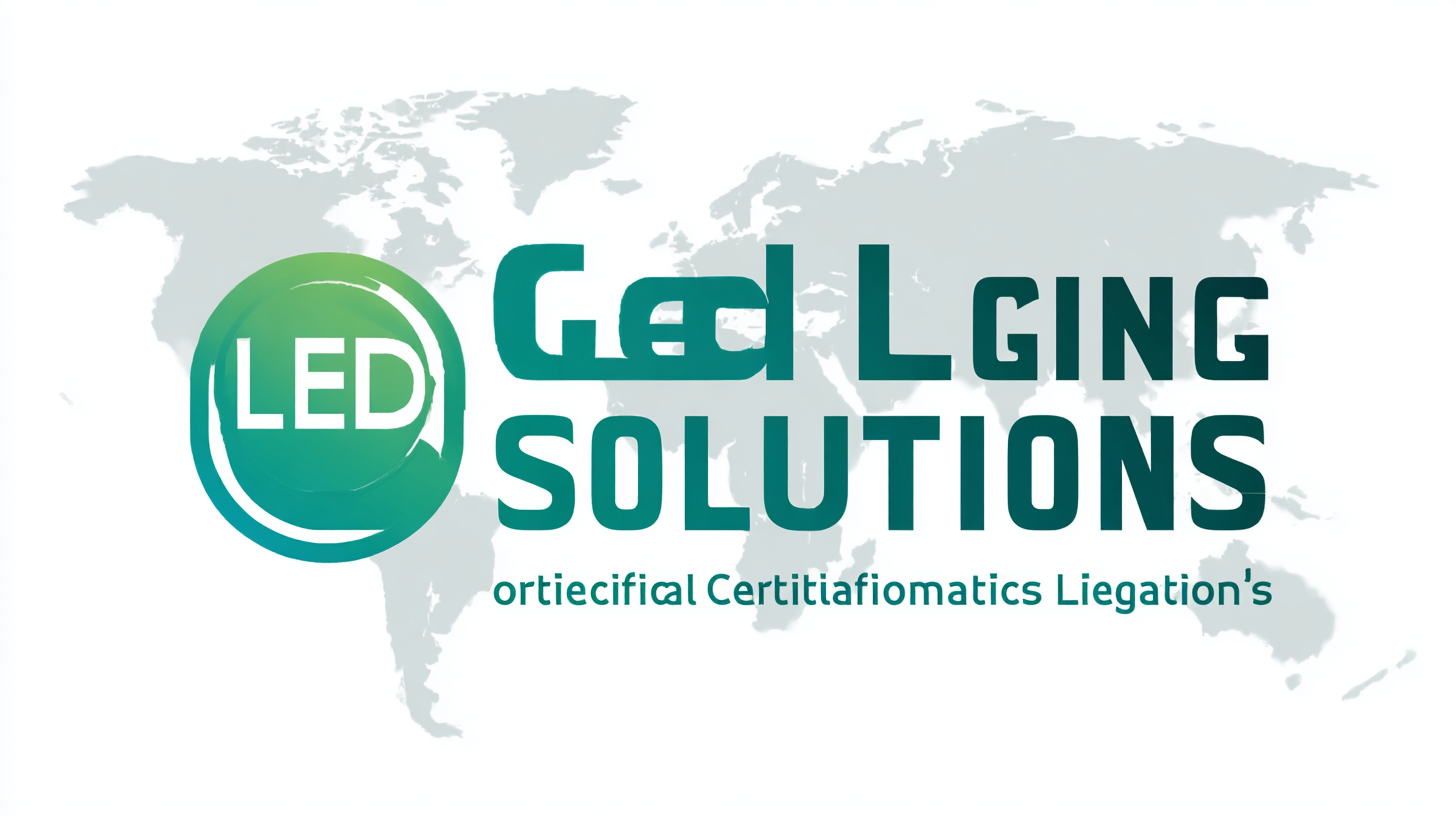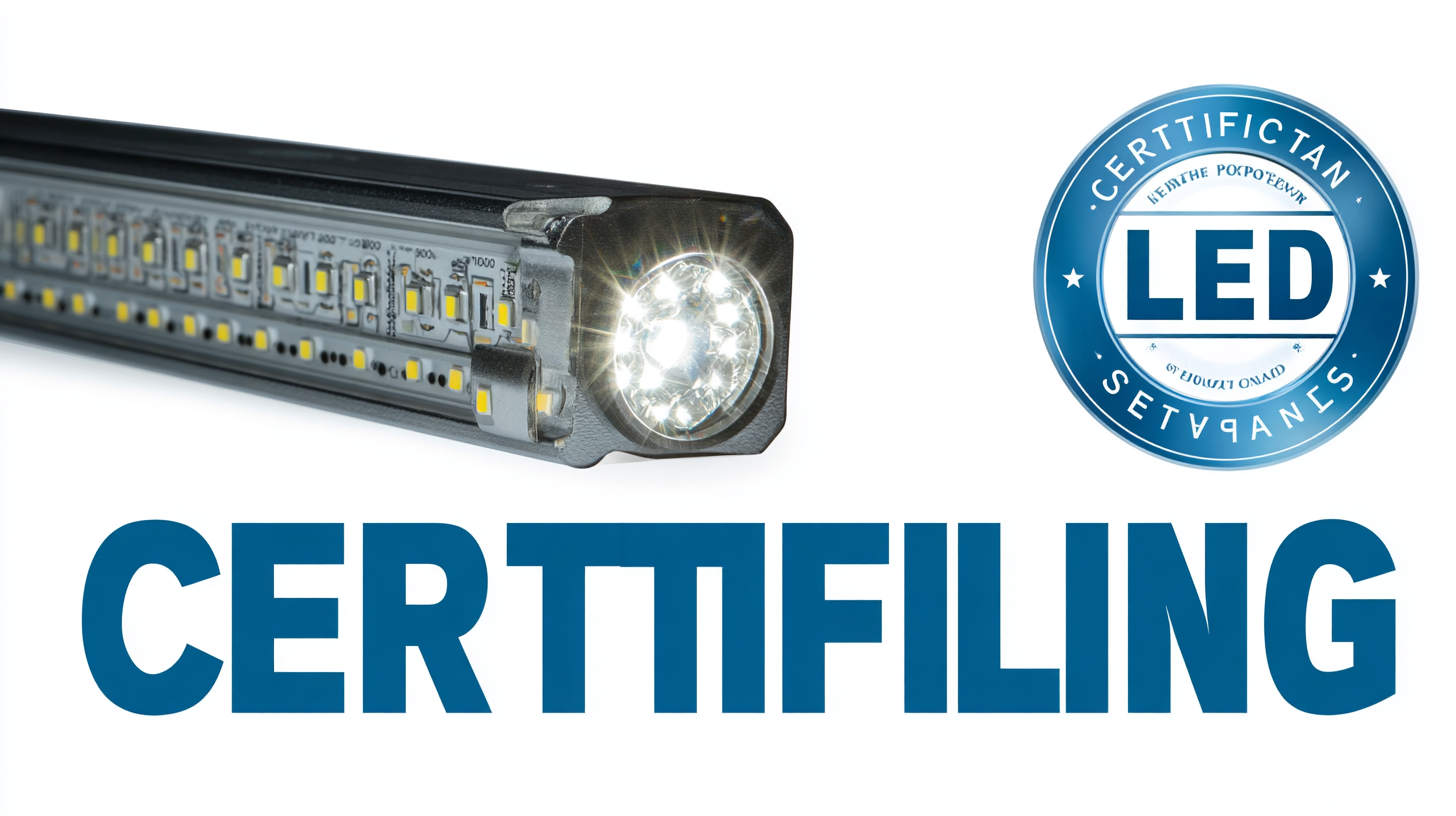Unlocking Global Markets: The Essential Certifications for the Best LED Lighting Solutions
In today's rapidly evolving technological landscape, the demand for high-quality LED lighting solutions has surged, making it imperative for businesses and consumers alike to understand the key factors that distinguish superior products. As global markets become increasingly interconnected, navigating the myriad of options available can pose a significant challenge. This blog aims to demystify the process of selecting top-tier manufacturers by exploring essential certifications that ensure reliability, efficiency, and innovation within LED lighting solutions. By focusing on the best types of certifications and manufacturers, we will provide a comprehensive guide that empowers stakeholders to make informed decisions, ultimately unlocking the full potential of LED technology in various applications worldwide.

Essential Certifications for LED Lighting Explained
In the rapidly evolving LED lighting industry, certifications play a critical role in ensuring product quality and compliance with international standards. Certifications such as ENERGY STAR, UL, and IEC 62031 are essential for manufacturers looking to penetrate global markets. For instance, according to a report from MarketsandMarkets, the global LED lighting market is projected to reach $110 billion by 2025, with a compound annual growth rate (CAGR) of 13.2%. This growth is fueled by the rising demand for energy-efficient lighting solutions, underscoring the importance of credible certifications that verify performance and energy savings.
Moreover, certifications not only enhance product credibility but also provide a competitive edge in the marketplace. The UL mark, for instance, signifies that a product has met rigorous safety and performance criteria, a crucial factor for consumers and businesses alike. A 2022 study by the American Lighting Association indicated that over 70% of lighting buyers consider certifications as a major decision-making factor. As manufacturers strive to meet stringent regulations and consumer expectations, obtaining reputable certifications is essential for navigating global trade and fostering trust in LED lighting products.

Understanding the Impact of LED Lighting on Global Markets
The global impact of LED lighting extends far beyond mere illumination; it significantly influences market dynamics and consumer behavior. As the global electrical equipment market is projected to expand from $1660.20 billion in 2025 to an impressive $3326.86 billion by 2032, with a compound annual growth rate (CAGR) of 10.4%, the adoption of energy-efficient solutions like LED lighting is crucial. This growth is not just a reflection of technological innovation but a necessary response to environmental challenges and changing market demands.
Moreover, the strategic application of LED lighting in retail environments, such as grocery stores, has been shown to affect customer decision-making significantly. Enhanced visibility and ambiance created by appropriately designed lighting can lead to increased customer dwell time and, consequently, higher sales. Reports indicate that effective lighting strategies can improve the shopping experience, making LEDs not only a cost-saving solution for retailers but also a powerful tool for driving growth.
However, the pervasive use of LED technology also presents concerns, particularly regarding its impact on wildlife. Continuous exposure to artificial lighting can disrupt natural behaviors in animals and even affect human health. As we pursue growth in the LED market, understanding and mitigating these impacts will be essential in creating sustainable solutions for both business and the environment.
Compliance Standards: Why Certifications Matter in LED Solutions
In today's competitive landscape, adhering to compliance standards is crucial for LED lighting solutions to succeed in global markets. Certifications serve as a testament to the quality and safety of products, ensuring that they meet stringent regulations set by various governing bodies. These standards encompass a wide array of aspects, from energy efficiency and performance to environmental impact, thus appealing to both consumers and businesses seeking sustainable solutions. Without these certifications, products may not only struggle to enter international markets but also risk reputational damage and legal repercussions.
Furthermore, certifications often act as a differentiator in a crowded marketplace. They signal to potential customers that a brand prioritizes excellence and responsibility, building trust and loyalty in the process. By investing in recognized certifications like ENERGY STAR, CE, or UL, manufacturers can not only enhance their marketability but also align with the growing demand for environmentally-friendly practices. As the world shifts towards sustainable energy solutions, having relevant certifications is not just an option—it is an essential component for success in the LED lighting industry.
Unlocking Global Markets: The Essential Certifications for the Best LED Lighting Solutions
| Certification Name | Region | Purpose | Validity Period |
|---|---|---|---|
| UL 8750 | North America | Safety for LED lighting products | Indefinite, with periodic updates |
| CE Marking | European Union | Conforms to health, safety, and environmental standards | Indefinite, compliance must be maintained |
| EN 60598 | European Union | Standard for lighting fixtures | Indefinite, compliance must be maintained |
| PSE | Japan | Product safety standards | Indefinite, requires ongoing evaluation |
| SAA | Australia & New Zealand | Compliance with electrical safety standards | Indefinite, with periodic checks |
Navigating the Certification Process for LED Products
Navigating the certification process for LED products is crucial for companies looking to enter global markets. Recently, the introduction of mandatory CCC certification for LED display products in the country has sparked significant discussion within the industry. Compliance with these regulations ensures that products meet safety and quality standards, ultimately enhancing consumer confidence and expanding market access.
To successfully navigate the certification process, companies should prioritize understanding local regulations and requirements. It is essential to stay informed about the latest legislative updates related to LED products, as this can affect both production and sales strategies. Engaging with certification bodies early on can also streamline the approval process, reducing potential delays.
**Tip 1:** Invest in training for your team to fully grasp the certification requirements, ensuring they can efficiently handle compliance documentation.
**Tip 2:** Build strong relationships with certified testing laboratories to facilitate timely evaluations and feedback on product design.
**Tip 3:** Regularly review and update your knowledge of regional certification processes to remain competitive in the global market.
Certification Standards for LED Lighting Solutions
This chart represents the various certification standards required for LED lighting solutions across different regions. The demand for certified LED products is growing, driven by regulatory requirements and consumer preferences.
Future Trends in LED Certifications and Market Opportunities
The landscape of LED lighting solutions is constantly evolving, and with it, the certification requirements that ensure quality and performance. As we move into a more energy-conscious world, industry reports predict that the global LED market will reach $140 billion by 2027, driven by advancements in technology and increased demand for energy-efficient solutions. Future trends in LED certifications, particularly those focusing on environmental sustainability and energy efficiency, are expected to play a pivotal role in accessing international markets.

To stay ahead in this competitive field, businesses should prioritize acquiring certifications such as Energy Star, CE Mark, and UL, which not only enhance product credibility but also meet the growing consumer demand for eco-friendly options. According to research from Markets and Markets, the demand for certified LED products is projected to grow significantly, with a year-over-year increase of 20% over the next five years. This underscores the importance of strategic investment in certifications to unlock new market opportunities.
Tips:
1. Keep abreast of regional certification requirements as they differ significantly around the world, which can impact market entry strategies.
2. Consider partnering with certification bodies to streamline the process and ensure compliance, thereby accelerating time-to-market for new LED products.
3. Engage in continuous research and development to adapt your products to evolving certification standards, ensuring long-term competitiveness.
 Skip to content
Skip to content